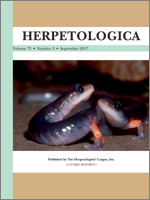Plethodontid salamanders are specialized for a low-energy lifestyle, offering an interesting model for studying vertebrate stress responses. Furthermore, in an increasingly changing environment, it is important to understand how plethodontid salamanders respond to a variety of different stressors. Here, I review findings from my research group on the impact of various stressors on behavior and physiology in three species of plethodontid salamanders. A robust response to putative stressors was a decrease in locomotory activity, which was found after exposure to handling, predator kairomones, and acidic environments. The change in locomotory activity was not related to changes in corticosterone (CORT), a glucocorticoid hormone (GC) considered to be a hallmark of the vertebrate stress response. The uncoupling of CORT from stress-induced behavior might relate to the fact that decreased locomotory activity is not energetically costly, while CORT is a metabolic hormone that functions to mobilize glucose. Although CORT was not related to changes in behavior, experimental elevation of plasma CORT decreased body mass, increased metabolic rate, and suppressed wound healing. In addition, experimental elevation of CORT increased infection abundance, but not disease, when exposed to an amphibian fungal pathogen. My research team has also tested whether individual variation in plasma CORT in free-living animals was a useful biomarker of health and population viability. One study found no relationship between plasma CORT, body condition, and environmental degradation. Another study found no relationship between plasma CORT, body condition, and measures of reproductive effort. Taken together, CORT might not be the primary mediator of responses to putative stressors in plethodontid salamanders, perhaps because of the low-energy lifestyle of plethodontid salamanders. I encourage more studies with a broader range of species and approaches to better understand the stress physiology of plethodontid salamanders.
How to translate text using browser tools
1 September 2017
Life in the Slow Lane: Stress Responses in Plethodontid Salamanders
Sarah K. Woodley
ACCESS THE FULL ARTICLE
<
Previous Article
|

Herpetologica
Vol. 73 • No. 3
September 2017
Vol. 73 • No. 3
September 2017
amphibian
biomarker
conservation
glucocorticoids
immune
testosterone
Urodela




